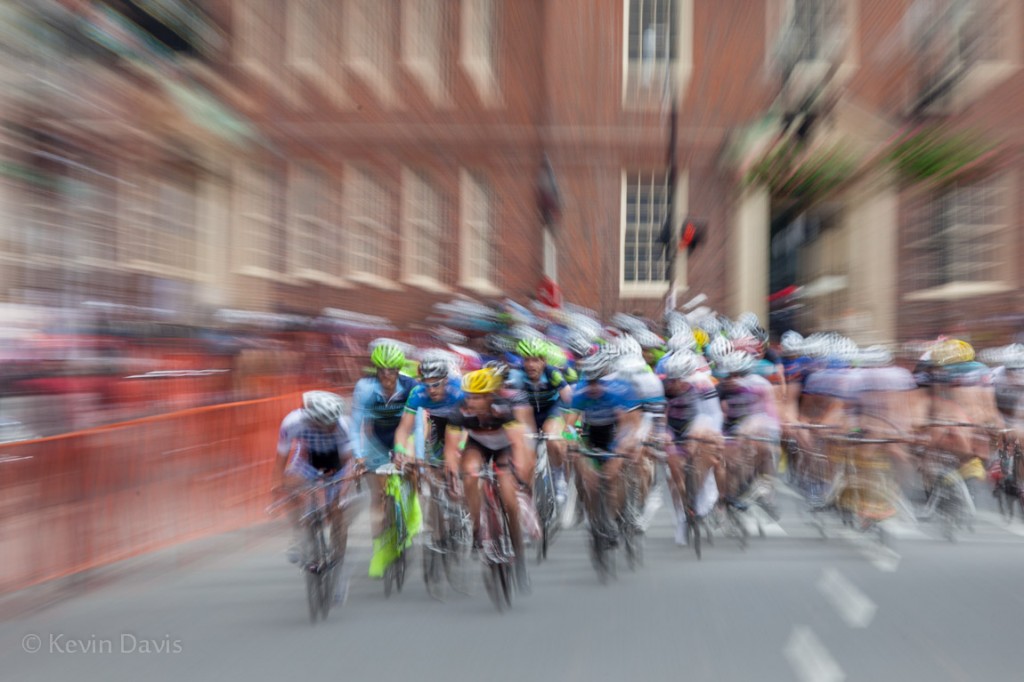Most sports photography employs fast shutter speeds, to freeze the action. But where there is motion, I want to show that. A slow shutter speed allows movement to blur. Here are a couple examples from a bicycle race last weekend in Boston.
(click on either image for a larger view)
While it is tempting to quote specific shutter speeds that I use, it really doesn’t work that way. The shutter speed depends upon (1) the speed of the moving subject, (2) the angle at which the subject is approaching, and (3) how much blur I want. So I might start out somewhere between 1/30 to 1/100 second and then chimp the back of the camera to see what it looks like.
(Chimping means frequently reviewing captured images on the camera display panel. If it looks really good, you scream like a chimp.)
To get basic motion blur, you lock down the camera such that the background is sharp and the moving subject shows blur. Alternativley, you can pan the camera to follow the the subject, such that the subject does not blur but the background does. Another technique is to actively zoom the lens during the exposure, which you see in the first image here, using a shutter speed of 1/4 second. A shutter speed of 1/4 is quite long, but the subject here is moving head-on towards me. Compare that to the second image, the subject is moving side-to-side perpendicular to the camera and the shutter speed is 1/30 second.
The blur effects shown here is achieved entirely in the camera. As the subject does not stay in one spot, the light reflecting off the subject is diminished. In post-processing (e.g. Photoshop or Lightroom), it is typically necessary to selectively restore brightness, contrast, and color saturation. In the second image here, I have intentionally over-stated the contrast and color saturation.
With a bit of experimenting, you can get some interesting abstract results. Motion blur photography is not new, but it is a bit unusual. It has been said, if you want to excel, if you want to stand out in a crowd of talented people, don’t simply mimic what everyone else is doing.

